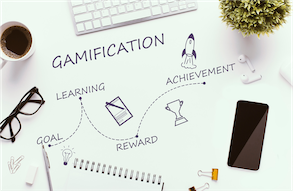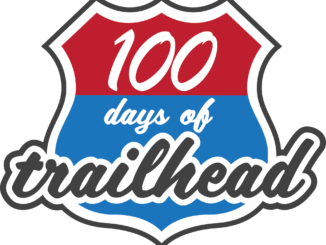In the fast-paced world of business technology, training employees effectively on Salesforce is essential for achieving optimal results. However, traditional training methods can sometimes fall short in engaging learners and ensuring knowledge retention. This is where gamification comes into play. In this blog, we will explore the concept of gamification and its benefits in training, how to incorporate gamification elements into Salesforce training programs, showcase case studies highlighting improved engagement and knowledge retention, and introduce tools and platforms for implementing gamification in Salesforce training.
Introduction to Gamification and Its Benefits in Training
What is Gamification?
Gamification is the practice of integrating game elements and design principles into non-game contexts, such as training and education. It harnesses the natural human inclination towards competition, achievement, and reward to motivate and engage learners.
Benefits of Gamification in Training
- Increased Engagement: Gamification makes learning fun and engaging, capturing learners’ attention and encouraging active participation.
- Enhanced Retention: Games stimulate the release of dopamine, a neurotransmitter associated with motivation and memory. Learners are more likely to remember and apply what they’ve learned.
- Motivation: Gamification provides intrinsic motivation by offering rewards, recognition, and a sense of achievement, driving learners to excel.
- Immediate Feedback: Games offer real-time feedback, allowing learners to understand their progress and make necessary adjustments.
- Competition and Collaboration: Games promote healthy competition and collaboration among learners, fostering teamwork and camaraderie.
Incorporating Gamification Elements into Salesforce Training Programs
- Leaderboards:
Create leaderboards to display the top performers in Salesforce training modules. This encourages friendly competition and motivates learners to strive for the top spot. - Points and Badges:
Award points and badges for completing training modules, quizzes, or challenges. Accumulating points and earning badges can be highly motivating. - Challenges and Quests:
Design training as a series of challenges or quests that learners must complete. Each challenge brings them closer to mastering Salesforce. - Scenarios and Simulations:
Incorporate realistic scenarios and simulations that mimic actual Salesforce use cases. Learners can apply their knowledge in practical situations. - Certifications and Levels:
Offer certifications or levels based on the complexity of Salesforce skills. Learners can progress through different tiers, increasing their proficiency. - (Virtual) Rewards:
Provide (virtual) rewards like (virtual) currency or in-game items that learners can collect and use within the training platform.
Case Studies Showcasing Improved Engagement and Knowledge Retention
Case Study 1: XYZ Corporation
Challenge: XYZ Corporation faced low engagement and knowledge retention rates in their traditional Salesforce training program.

Gamification Solution:
XYZ Corporation introduced leaderboards to create a sense of competition among sales teams.
They implemented a points and badges system for completing training modules and quizzes.
Challenges were designed as sales simulations where learners had to use Salesforce to close deals.
Result:
Engagement and participation rates soared. Completion rates for training modules increased, and knowledge retention improved significantly. Sales teams became more adept at using Salesforce to drive revenue
Case Study 2: ABC Healthcare
Challenge:
ABC Healthcare struggled with user resistance to Salesforce adoption, with employees finding it challenging to transition from legacy systems.
Gamification Solution:
ABC Healthcare created a certification program with levels that users could achieve by mastering Salesforce features.
Points were awarded for successfully completing data entry tasks, which were otherwise perceived as tedious.
Virtual rewards like “Healthcare Hero” badges were introduced for data accuracy achievements.
Result:
User adoption increased, and data accuracy improved. The gamification elements made the transition to Salesforce more engaging and motivating for employees.
Conclusion
Gamification is a powerful tool for enhancing Salesforce training programs by increasing engagement and knowledge retention. Its ability to motivate learners through competition, rewards, and a sense of achievement can significantly impact user adoption and proficiency. By incorporating gamification elements such as leaderboards, points, badges, challenges, and simulations into your Salesforce training, you can create a more engaging and effective learning experience
The case studies presented in this blog demonstrate the tangible benefits of gamification in improving engagement and knowledge retention.
Gamification can transform Salesforce training from a mundane task into an exciting and motivating journey toward Salesforce mastery.
The series:
- Blog 1: “Building a Comprehensive Training Plan for Salesforce”
- Blog 2: “The Significance of a Training Needs Analysis (TNA)”
- Blog 3: “Securing Executive Buy-In for Salesforce Training”
- Blog 4: “Embracing Change Management in Salesforce Training”
- Blog 5: “Comparing Training Solutions: Face-to-Face vs. Video vs. E-Learning”
- Blog 6: “Effective Training Delivery: Tips and Best Practices”
- Blog 7: “Leveraging Gamification for Salesforce Training Success”
- Blog 8: “The Role of Continuous Learning in Salesforce Success”
- Blog 9: “Overcoming Common Salesforce Adoption Challenges”
- Blog 10: “Future Trends in Salesforce Training and User Adoption”




Be the first to comment